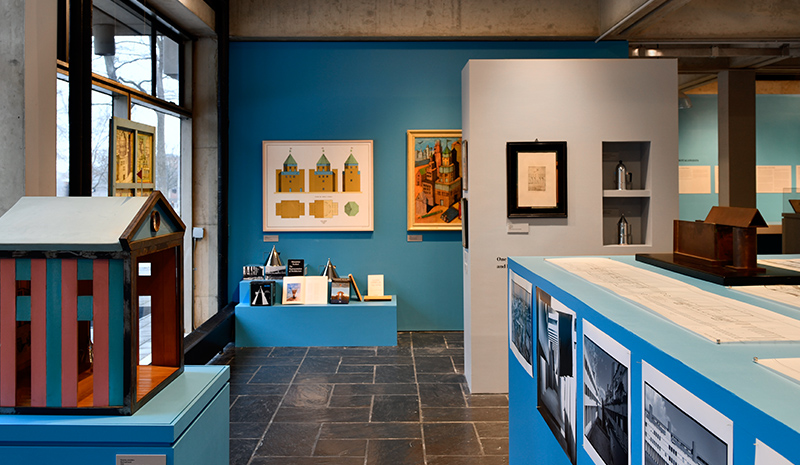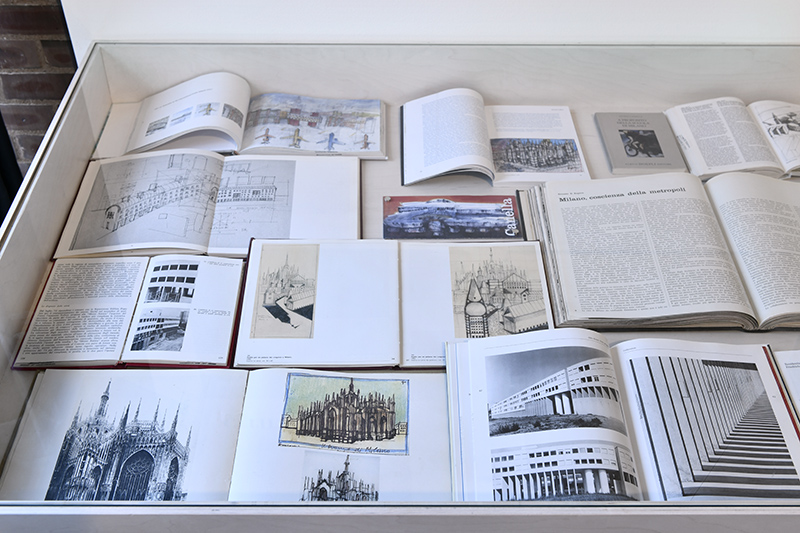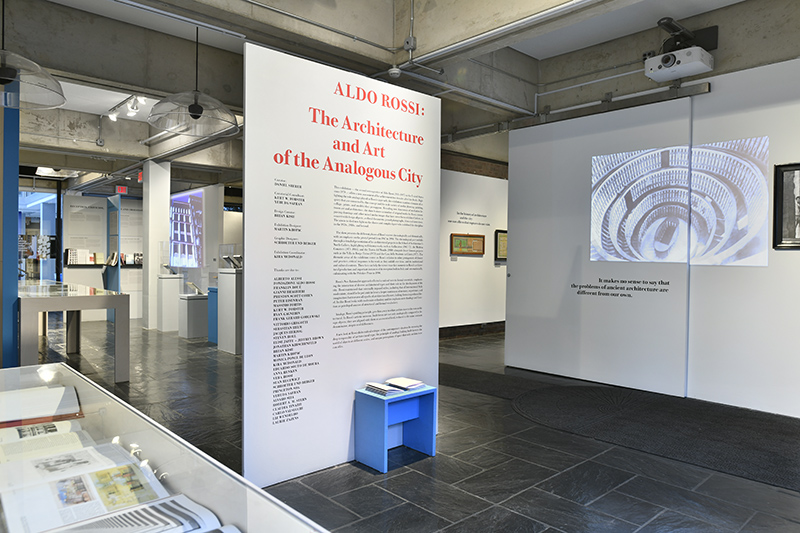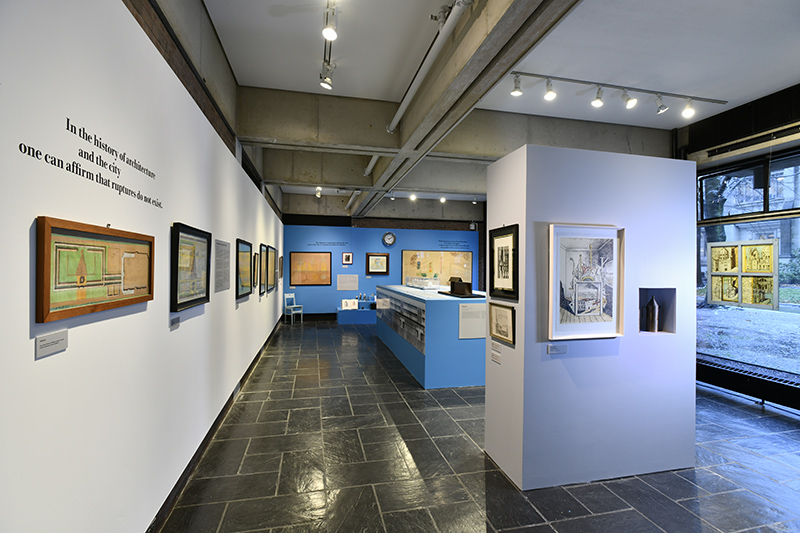ARCHITECTURE:Aldo Rossi-The Architecture and Art of the Analogous City
 Aldo Rossi advocated the use of a limited range of building types and concern for the context in which a building is constructed. This postmodern approach, known as neorationalism, represents a reinvigoration of austere classicism. In addition to his built work, he is known for his writings, numerous drawings and paintings, and designs for furniture and other objects.
Aldo Rossi advocated the use of a limited range of building types and concern for the context in which a building is constructed. This postmodern approach, known as neorationalism, represents a reinvigoration of austere classicism. In addition to his built work, he is known for his writings, numerous drawings and paintings, and designs for furniture and other objects.
By Efi Michalarou
Photo: Princeton University Archive
The exhibition “The Architecture and Art of the Analogous City” that is on presentation at Princeton University School of Architecture is the second retrospective of Aldo Rossi in U.S.A. since 1979 and offers a new assessment of his multifaceted achievements as architect, designer, and theorist of architecture and the city. The exhibition features a number of original works by Rossi, encompassing drawings and other mixed media images that have never been exhibited before, in concert with design objects, archival documents, period photographs, films, and interviews. The aim is to shed new light on the elusive and complex figure who redefined the discipline in the 1970s, 1980s, and beyond. In 1966 Rossi published his seminal publication “L’architettura della città”, which quickly established him as a leading international theoretician. In the text he argued that, over the course of history, architecture has developed certain continuous forms and ideas, to the point that these are standard types in the collective memory that move beyond the scope of style and trends. To Rossi the modern city is an “artifact” of these architectural constants. Rather than disrupt this fabric with shockingly new, individualistic architecture, Rossi maintained that architects must respect the context of a city and its architecture and tap into these common types. This position is called neorationalist, since it updates the ideas of the Italian rationalist architects of the 1920s and ’30s, who also favoured a limited range of building types. The exhibition presents different phases of Rossi’s career chronologically and thematically, with an emphasis on the period from 1967 to 1990. The chronological part unfolds through a detailed presentation of his architectural projects in the School of Architecture’s North Gallery, highlighting well-known works such as “Gallaratese” (1967-74) an enormous concrete structure built to house 2,400 people, the “San Cataldo Cemetery” in Modena (1971-1984) this design for the sanctuary of the cemetery, a heavy cube standing on square pillars with raw square windows carved out in symmetrical layers, stripped architecture down to its essence. Rossi gained international attention at the Venice Biennale in 1980 when he designed the “Teatro del Mondo”, a floating theatre. The wood-clad structure, featuring an octagonal tower, recalled the Venetian tradition of floating theatres and, Rossi believed, tapped into the collective architectural memory of the city, alongside lesser known projects such as the “Villa in Borgo Ticino” (1973) and the “Casa dello Studente” in Chieti (1977). The thematic areas of the exhibition center on Rossi’s relation to other protagonists of theory and practice, critical responses to his work as they unfold over time, and their institutional and cultural contexts. Renewed attention to the works showcased in the exhibition casts an unexpected light on the architectural present and its roots in theory and practice from the late 1960’s to the 1980’s. A glance at Rossi now opens new doors to a radical critique of this era by stressing the deep temporality of architectural type, the principle of analogy linking built form to the world of objects at different scales, and unique perceptions of space that only architecture can offer.
Info: Curator: Dan Sherer, Princeton University School of Architecture, North Gallery, School of Architecture, Princeton, New Jersey, Duration: 5/2-30/3/18, https://soa.princeton.edu





